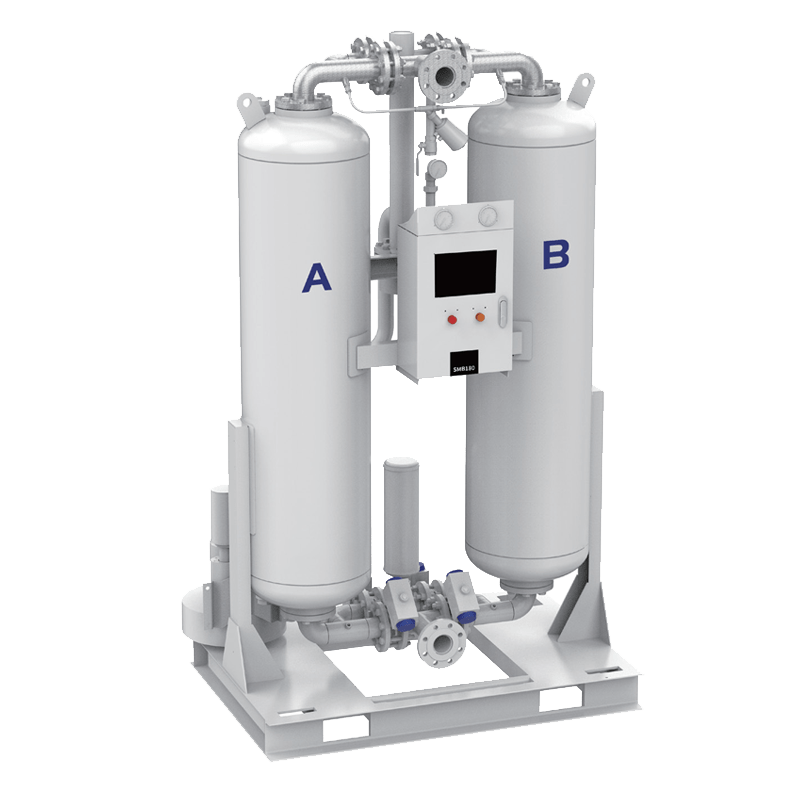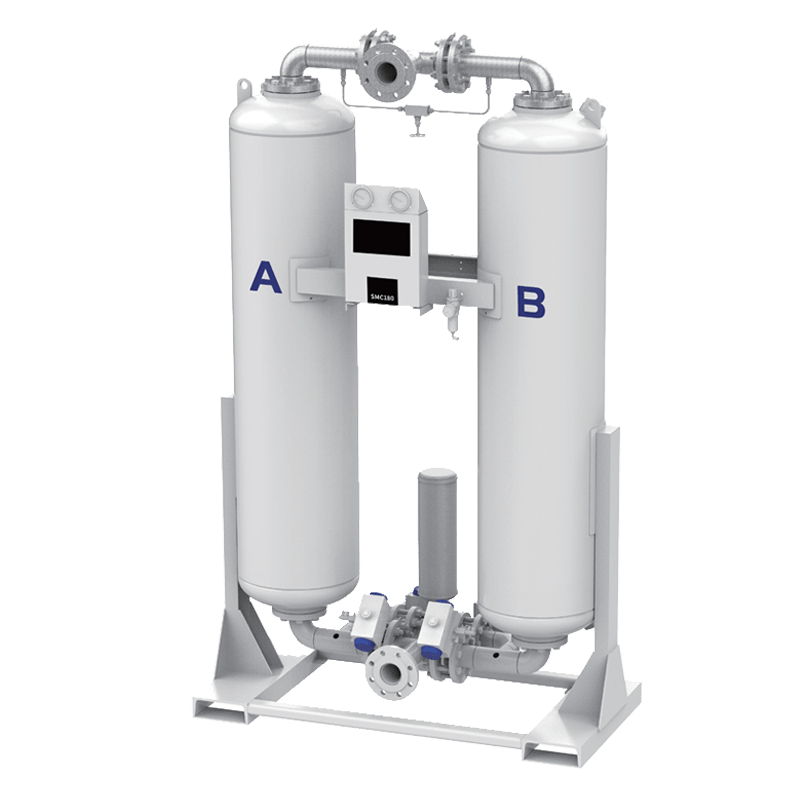Heated Blower Adsorption Air Dryer
Regeneration gas volume: ≤0%
Working pressure: 0.6~1.0Mpa
Intake oil content: ≤0.1mg/m³
Pressure dew point: -20℃
Standard working cycle: 2~8 hours
Intake temperature: 0℃~45℃
Description
Is your compressed air clean?
The atmosphere naturally contains several impurities such as dust, various forms of carbon dioxide, hydrogen compounds and water in the form of humidity.
Once sucked into the compressor, these impurities are compressed and sent along the pipeline along with the oil particles. These contaminants interact to produce abrasive and corrosive effects that can cause wear of downstream equipment or form corrosive emulsions.
Sollant has developed a range of premium air solutions to ensure professional air quality. Increase efficiency and productivity and extend the life of equipment and tools. The quality of compressed air is of paramount importance to users. If air laden with contaminants comes into contact with the final product, the cost of rejecting the final product can be unacceptably high, and the cheapest option for producing a product can become prohibitively expensive.

Heated Blower Adsorption Air Dryer Features
» Features
- Zero gas consumption for regeneration
- Large-sized tower body ensures air flow rate and contact time
- High-performance adsorbent with stable performance and long service life
- Temperature Butterfly Valve
- High-temperature protection, low-density heater
- High-quality blower, stable and reliable
- PLC control
» Working principle
Adsorption drying process: compressed air containing moisture flows through the adsorption tower equipped with high-performance adsorbents, and the moisture in the compressed air is absorbed and dried by the adsorbents and flows to the gas terminal for use at the gas point.
Regeneration process: This series of dryers uses a high-pressure blower to blow ambient air (as a regeneration airflow) into the heating cylinder of the heater, and flows through the adsorbent that needs to be desorbed. Using the principle of desorbing the adsorbent at high temperatures, the water part is taken out of the adsorption cylinder and discharged to the atmosphere.
Technical Parameters





